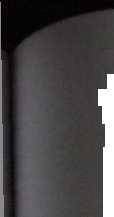20892 P1190292
140 Marcin S Przybyła
<*„„ A . W3. ^irhM.nv»V» pali. |»n:l V. Podborsky <cU). Pruv*k* Mjiny
łkwi. Wl- . . , ,
1 rgm* ci t«MV r Unihnlr hśfn k*f kuhmry v ŻMn Wn»n«w. Archncologlckć vyskumv a nale/y
Ml HK^wtuAm y toku 1*9*2, 1*1-* 1*5.
Traka O., H» XVr Hurp*imU ran Schiłtrm Vt> 6'lwaf spOlurrurrtfirltiot -/rtl/lhatIsltUlscMic/ic .ll>-■ii-/ini«n/» umarii: mm a»mrrr»» Archueolofctia Auatnnca 67, 129 156.
\Wia.'ik | . 1970, .v<»« »u*n*i'» ruiJ,~z\ vtrfeulcktri kułmr\- .r .4ftru/iiWiH, Slovcnsk* archeologia 18, «2MU
»«S3 1 Iw .^.I.r^r AiJaraAr-«»>.ułr«, Nurm
nH iW ~ ąęr pw X<awt>niar Jn Beslfiiłum; lirr /iitisil-nr nih/ mitleUhuiubischen l /men-fkUa n Hi X»a*«ał»i, |» I i Chochorciwski (ad.). Pmhtemy rf/x>ki hrtpti I iv«-resnei epoki tftmtm a tw«|a( .fhuttnra Au<An/nii;imii fuhrictWMi \/arkt>wi 6‘n//oK'/t Kraków. 503- SU
łdtta Ck )*»•*>. r>ru>A- Aania • /wiKiirii &mnze9cit OAmrA/mlmi. (in:) K. Schwarz (ed.li Sarwa bafcaanm ArtijaAaai tfft G+ł*imntg ran Uartin Mthn. łłalla/Saaltf. 134-152

Al TA UNIYBRSITATIS WRATiSLAVIENSIS No 2960 Studiu Archeologiczne XL Wrocław 2007
iRiAUSAK'
GLASS BEADS FROM THE CEMETERY IN MIŁOSLAWICE IN SILESIA.
POSSIBLE INTERPRETATIONS
Hcadl madę of gląze are attractive discovcrics. and when found in groves mwryoftett considered to be thc clcments “distinguishing" burials which they iiiwnied. Thcy appeared in great numbcr at the Lusatian culture cemeteries, •wially at thc sites locnted in the western part of Poland. which was embraced bymmi: so-called Hallstatt influenccs. It is not easy to estimate the aggregate «hcr ofbeads known front Silesia, or to map all thc sites connected with thcnt. Dk itate or research on that group of products does not look well and has not dl.mged significantly sińce the beginning of 1990s, i.e. when T. Malinowski pub-lisliaj'his cntical twiew of it. The author pointed at acutc shortage of publications deuHcd entirely to those products. especially conceming their disscmination. ' pokigical and chronologieal divcrsity. not to mcntion the need of performing nicd Chemical nnalyscs. which niight allow to indicate spccific directions front •e those products were brought to Polish lands (Malinowski 1991).
Hic tuja of this paper is mainly a presentation of a large set of glass bcads Jwg cred at u cemetery front thc end of the Bronze Age and the early Iron Age in Mikałwice, as well as an attempt at interpretation of the prcscncc of such finds . i.vd to a spccific. vast necropolis. No professionnl Chemical analyses have, ncdly, heen carried out yet, but the number and \ ariety of glass bcads is sig-.it and suggests that they might have been produced in difterent workshops.
In various papers on the connections between Polish lands and neighbouring ■ es. thediscusscd category of products is gencrally interpreted as imports. "'uduets of a foreign provenance, which in wious periods of the Bron/e fMndcsjtccially in the early Iron Age. "poured in" front the widely recognised >. of Europę (luka I9J9; 81; Bukowski 1989; 197). Appearancc of nunterous i ivjd> in Great Poland is regnrded as one of the presages of qualitativcly ootacłs of Polish territorics with the Alpine-Meditcminc.in world u ithin
ImIMb of Aiv h.uvlogy. UnWersity of Wrocław.


Wyszukiwarka
Podobne podstrony:
83750 Obraz 1 (2) 140 Ryszard Przybylski [12] downości" u nas na przykład spotykamy się w
86 (140) vi^»., a/m f uV,ł
Ifpp W?żź 3 mm * JS : i SIWK: §v.*i 1 l&wlsi . L i w
„Z tych wykładów Marcinek nie osiągał nie tylko żadnego zrozumienia rzeczy, ale owszem głupiał coraz
84 (140) 84 Marcin Bi będzie bowiem z pewnością w dużej mierze możliwość wpływania przez na na przys
DSC03947 140 WSTĘP DO TECHNIKI ANTENOWEJ Widzimy też, źe rp = r = yy + zż i T = z ż, co prowadzi do
IMGP9464 140 Argonauci Zachodniego Pacyfiku gdy nie służy przybyszowi jako miejsce do spania, stanow
File0512 (3) POŁĄCZENIE Z FUNDAMENTEM WARIANT I MATERIAŁ Stal St3SX Beton klasy B 150 /marka 1
CCF20030101�006 SPRAWOZDANIE Z ĆWICZEŃ Imię i nazwisko: Paweł Przybył, Maciej Przybysz, Wojciech Lek
skanuj0012 zabudowa lasy BK cmentarze stadion mn.p.m. 170 160 150 140 130 n)
skanuj0012 (140) E. Michlom :cz: B.uidr.ia operacyjne i eksploatacyjne - PodstawyZadania przepływów
skanuj0012 (299) /nOi9&fć% vrr^3a 7WT ćc outcU/ kcłyQ , €Ź? <3ie^-’e ^Cr-ĆU
więcej podobnych podstron